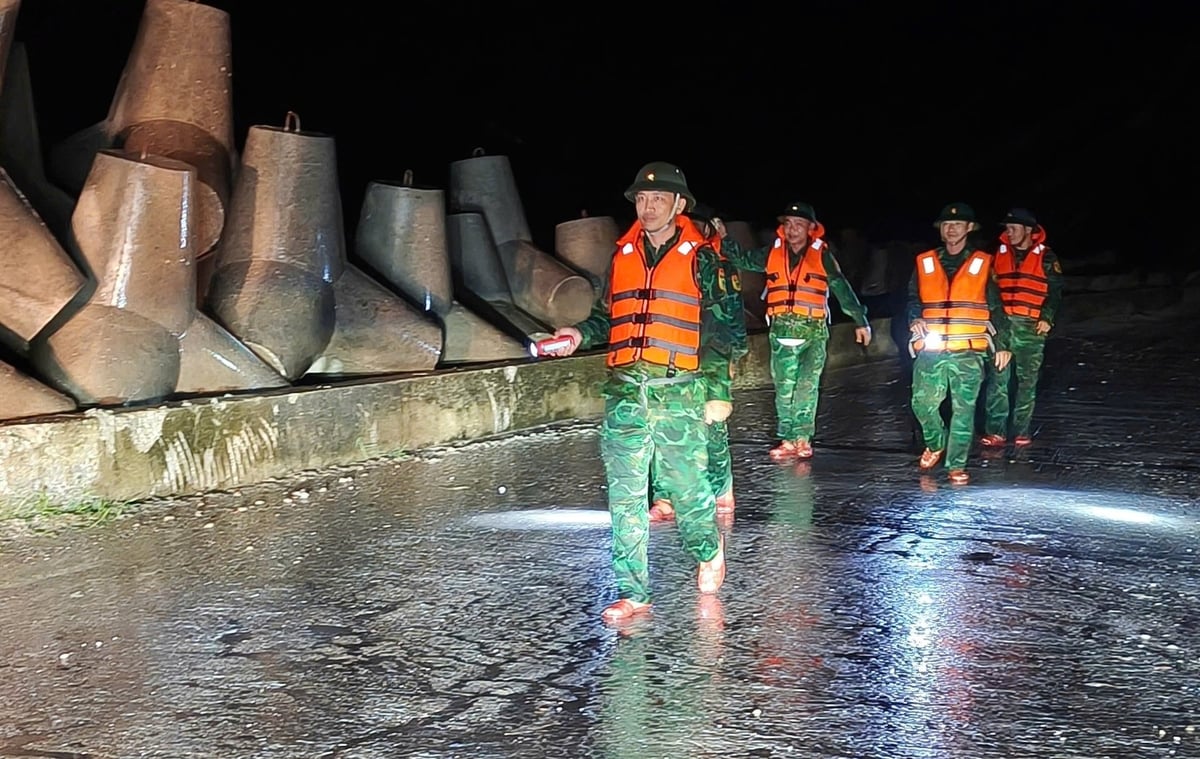December 3, 2025 | 20:59 GMT +7
December 3, 2025 | 20:59 GMT +7
Hotline: 0913.378.918
December 3, 2025 | 20:59 GMT +7
Hotline: 0913.378.918
Ninh Binh, a province in Vietnam’s Red River Delta, spans 3,943 square kilometers with a population of over 4.41 million and an average annual income of 69.91 million VND. Bordered by Hung Yen, Thanh Hoa, Hanoi, Phu Tho, and the East Sea/ South China Sea, the province is exposed to nearly every type of natural disaster, including typhoons, tropical depressions, heavy rains, floods, droughts, saltwater intrusion, and forest fires. This makes disaster prevention and control (DPC) a top priority, requiring proactive measures to avoid being caught off guard.

Bui Xuan Dieu, Deputy Director of the Ninh Binh Department of Agriculture and Environment speaking at the “Disaster Prevention and Early Warning in the Operation of a Two-Tier Government" forum. Photo: Pham Hieu.
During the “Disaster Prevention and Early Warning in the Operation of a Two-Tier Government" forum on August 12, Bui Xuan Dieu, Deputy Director of the Ninh Binh Department of Agriculture and Environment affirmed that the province has benefited from investments and technical support from the central government, the Ministry of Agriculture and Environment, and the Disaster Prevention Community Fund, enabling infrastructure upgrades to meet DPC needs better.
Following the administrative reorganization under Resolution 202, the Ninh Binh People’s Committee issued a series of key directives: establishing the Provincial Civil Defense Steering Committee, adopting its operating regulations, assigning tasks to its members, and approving both a provincial key infrastructure protection plan and a province-wide dyke protection and major flood response plan.
The Department of Agriculture and Environment guided localities in forming civil defense steering committees and grassroots DPC rapid response teams. As of now, all 129 communes and wards have such committees and teams in place, comprising 27,627 members ready to respond to emergencies.
During the 2025 typhoon season, the province issued four official directives to its departments and local governments to prepare for Typhoon Wipha. Damage assessments were conducted through an online platform (Google Sheets), significantly shortening the reporting process and ensuring timely submission in line with national regulations.
Dieu acknowledged that carrying out DPC tasks under a two-tier government structure remains challenging. First, the restructuring of the Standing Office of the Civil Defense Steering Committee has made it challenging to clearly divide responsibilities between the new office and the former Standing Office of the Provincial Steering Committee for Natural Disaster Prevention and Search and Rescue.
Second, commune-level officials have had to take on new responsibilities, especially in DPC, after the administrative merger without being full-time staff or having sufficient expertise and experience.
Third, there is still no coordination mechanism between commune-level Military Command Boards when handling incidents spanning multiple communes or areas, leading to delays and confusion in joint operations.
In addition, the stockpiling of materials, equipment, and essential supplies in some localities remains insufficient to meet the “four on-the-spot” principle (forces, command, materials, and logistics available locally). Some contingency plans are still too general and not tailored to real-world conditions.
Grassroots rapid response teams lack regular training and proper tools for their missions. Aging housing, old apartment blocks, and disaster prevention infrastructure remain vulnerable to storms and floods.
Timely reporting from the grassroots level is another challenge, particularly given the increased number of communes and wards after the merger, which makes it harder to compile damage assessments in time under Circular 18.
To address these shortcomings, the Department of Agriculture and Environment has proposed several measures. First, in accordance with the Law on Civil Defense and Decree 200, the province will consolidate civil defense steering committees from provincial to commune levels. The province will also strengthen the organizational apparatus of both the Provincial Disaster Prevention Fund and the Provincial Civil Defense Fund.

Local task force patrolled Ninh Binh's coastal area as Typhoon Wipha strikes northern Vietnam. Photo: Pham Hieu.
Plans and contingency measures will be developed based on specific risk levels, accompanied by regular drills and training sessions to enhance the capabilities of local officials and response teams.
Stockpiling under the “four on-spot” principle will be prioritized, ensuring adequate forces, means, supplies, and on-site command capacity. At the same time, the province will expand the application of advanced science and technology in DPC, such as real-time monitoring, early warning systems, and online reporting tools, to improve decision-making and operational efficiency.
Dieu emphasized that building community resilience will require mobilizing resources beyond the state budget, involving businesses, social organizations, the Disaster Prevention Community Fund, and local residents to strengthen infrastructure, upgrade rescue equipment, and support recovery efforts.
Given its geographical location and complex climate conditions, Ninh Binh sees disaster prevention not only as a government duty but also as a collective responsibility. Coordinated organization, enhanced human resources, upgraded facilities, and the use of modern technology are considered essential to proactively respond to disasters, minimize losses, and safeguard lives and property.
“We are determined to implement solutions in a synchronized, timely, and realistic manner, ensuring we are never caught unprepared in the face of natural disasters”, Dieu affirmed.

(VAN) This is an initiative of MAE aimed at creating a unified coordination mechanism to implement agricultural cooperation programs with developing countries.

(VAN) Con Dao National Park officially received its Green List status after it was announced at the IUCN World Conservation Congress in Abu Dhabi in October.

(VAN) The National Assembly’s inspection delegation called for a renewed approach to marine economic development, the removal of legal 'bottlenecks,' and strengthened marine environmental protection.

(VAN) The inevitable path forward is to reorganize production along the value chain, utilizing cooperatives as the core, enterprises as the driving force, and farmers as the central subjects.

(VAN) On November 28, Minister Tran Duc Thang, together with China's Minister of Agriculture and Rural Affairs Han Jun, chaired the 2nd meeting of the Viet Nam - China Agricultural Cooperation Committee.

(VAN) Forest carbon credits are only accepted when they ensure absolute environmental integrity, additionality, permanence, and transparency.

(VAN) Viet Nam partners with Beijing on controlling air pollution, cross-regional management, high-tech monitoring and relocating polluting facilities.